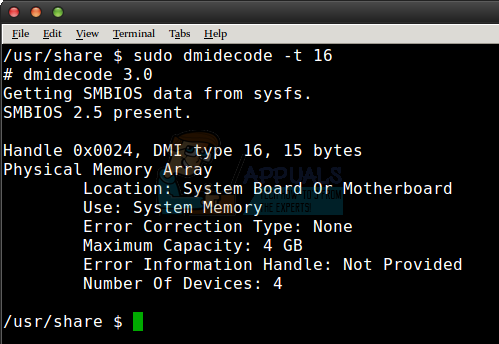Check Memory Slots Linux
If you need memory totals, you can add the t option like so: free -mt. This will simply total the amount of memory in columns (Figure 5). Figure 5: Having free total your memory columns for you. Another very handy tool to have at your disposal is vmstat. This particular command is a one-trick pony that reports virtual memory statistics. In this article we will see basic commands to check physical memory on a server in Linux. Many beginners struggle with knowing their system well in context to resources like CPU, Memory, disks, etc. So I decided to write this small article pinpointing commands to check RAM on the Linux server. The love Linux Check Memory Slots Used for gambling of all forms in the UK led quickly to creating a huge online presence. Many of the traditional betting shops opened up websites, accepting deposits online and opening the door for players to play real money games including poker, casino, and bingo.
The output should look something like this:
Check Memory Slots Linux Downloads
 Here's an example output for the command above:
Here's an example output for the command above:
Also see: How To Get Hardware Information In Linux
Here’s a useful way of finding out how many memory slots are occupied on the motherboard of a machine without removing the cover, as well as how much installed physical memory is supported.
We can use the dmidecode command to reveal your systems DMI table, which contains details of the systems hardware.
There are a whole load of DMI types we can look at – a full table of those at the end of this article.
In this particular case, we are interested in memory – type 16 ‘Physical Memory Array’ will show us how much memory is supported and DMI type 17 will reveal details of currently installed memory.
So, first off:-
dmidecode -t 16
Maximum Capacity shows us the maximum amount of memory can be installed in the machine. Number of devices tells us how many slots there are on the motherboard – in this case, 8.
Now we can interrogotate DMI type 17 – ‘Memory Device’ to show us details of installed memory
dmidecode -t 17

Each module installed will be listed with the the information given above. If we just want to know how many modules are installed and what size they are, we only really need the Size: – so we use grep
dmidecode -t 17 grep Size
From this we can see that 8x 2048MB modules are installed – so all the slots on the motherboard are populated.
There is plenty of other useful information that can be retrieved using dmidecode, including
-t1 System
-t2 Base Board
Check Memory Slots Linux Iso
-t3 Chassis
-t4 CPU
-t9 PCI slots
Full SMIBIOS Specification
Check Memory Slots Linux Usb
1 System
2 Base Board
3 Chassis
4 Processor
5 Memory Controller
6 Memory Module
7 Cache
8 Port Connector
9 System Slots
10 On Board Devices
11 OEM Strings
12 System Configuration Options
13 BIOS Language
14 Group Associations
15 System Event Log
16 Physical Memory Array
17 Memory Device
18 32-bit Memory Error
19 Memory Array Mapped Address
20 Memory Device Mapped Address
21 Built-in Pointing Device
22 Portable Battery
23 System Reset
24 Hardware Security
25 System Power Controls
26 Voltage Probe
27 Cooling Device
28 Temperature Probe
29 Electrical Current Probe
30 Out-of-band Remote Access
31 Boot Integrity Services
32 System Boot
33 64-bit Memory Error
34 Management Device
35 Management Device Component
36 Management Device Threshold Data
37 Memory Channel
38 IPMI Device
39 Power Supply
40 Additional Information
41 Onboard Device